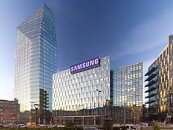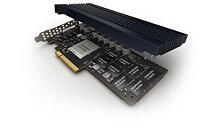Phison Acquires Nextorage to Strengthen Customized High-end Storage Market
In response to the rising market demand for next-generation, customized high-end storage, Phison Electronics Corp. (Phison; 8299TT), a leader in NAND controllers and NAND storage solutions, acquired shares of its joint-venture company Nextorage Corporation (hereinafter referred to as "Nextorage") from its joint-venture partner, Sony Storage Media Solutions Corporation (hereinafter referred to as "SSMS"; SSMS is a wholly-owned subsidiary of Sony Group Corporation). The acquisition continues Phison's expansion into the customized high-end storage market, including high-resolution image processing systems, automotive electronics, e-sports and gaming systems, factory automation, electronic medical equipment, and industrial robots, etc. Through the resources of local R&D engineers in Japan, it serves nearby Japanese customers and continuously improves service quality.
Japan is a major industrial country. In addition to industrial robots that are widely used globally, automotive electronics, e-sports and game systems, high-resolution imaging systems, electronic medical equipment, and factory automation equipment all occupy important positions in the world. In addition to high-speed data access, storage products required by this type of high-end application market often require a certain degree of customization and system-optimization adjustments for terminal applications. In other words, the standard storage products on the market cannot be perfectly matched and integrated with the system side, and therefore there is a demand gap for customization. The acquisition of the joint-venture company Nextorage, from joint-venture partner SSMS, which is strong in the customized high-end storage market, is expected to help Phison strengthen its high-end customized storage products to meet the needs of the Japanese and global markets.
Japan is a major industrial country. In addition to industrial robots that are widely used globally, automotive electronics, e-sports and game systems, high-resolution imaging systems, electronic medical equipment, and factory automation equipment all occupy important positions in the world. In addition to high-speed data access, storage products required by this type of high-end application market often require a certain degree of customization and system-optimization adjustments for terminal applications. In other words, the standard storage products on the market cannot be perfectly matched and integrated with the system side, and therefore there is a demand gap for customization. The acquisition of the joint-venture company Nextorage, from joint-venture partner SSMS, which is strong in the customized high-end storage market, is expected to help Phison strengthen its high-end customized storage products to meet the needs of the Japanese and global markets.









































